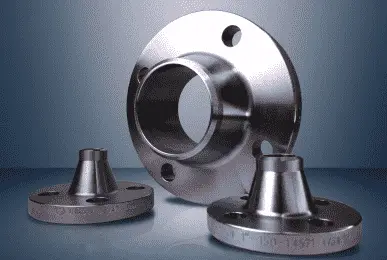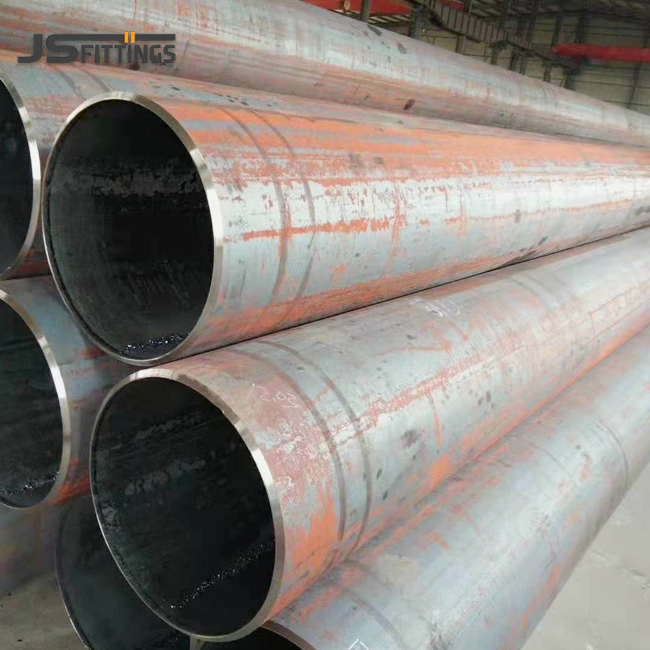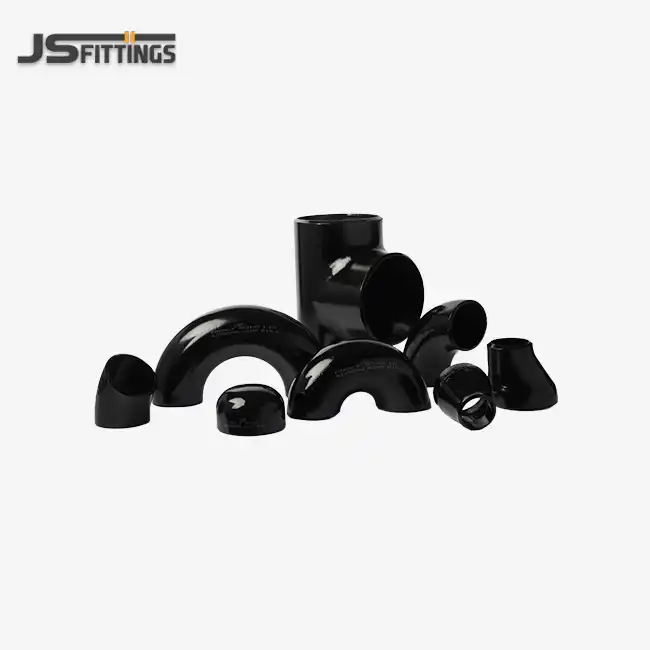To choose the best weld neck pipe flange for oil and gas applications, you need to know important performance requirements, material compatibility, and industry norms. These forged flange parts are stronger and make connections that don't leak, even in high-pressure situations. This makes it very important to choose the right ones for the safety and cost-effectiveness of the project. This complete guide covers important factors like the size of the flange, the grade of the material, the pressure rating, and the installation requirements. It helps engineers, contractors, and procurement experts make smart choices that lower risk and guarantee long-term reliability.
Design Principles and Structural Advantages of Weld Neck Flanges
Weld neck flanges are the best choice for important piping jobs because of their special hub design and smooth change from pipe bore to flange face. These flange fittings have a long, tapered hub that properly distributes tension over the pipe connection. This is different from slip-on or socket weld fittings. This technical benefit is also important in high-pressure flange situations where thermal cycling and mechanical stress can break down poor designs.
The raised face flange design that is often used in oil and gas installations improves sealing performance by concentrating the gasket compression. Professional engineers know that the smooth bore transition gets rid of turbulence and pressure drops that might make a system less efficient. Hot forging from high-quality steel billets is part of the manufacturing process. This makes the grain structure and mechanical qualities better than cutting plates.
Industry experience reveals that effective flange specification selection directly effects total cost of ownership. The initial cost of these flanges may be more than those of other varieties, but their longer service life and lower maintenance needs save a lot of money throughout the life of a project. Knowing these basic design rules helps you make smart choices for tough projects.

Criteria for Choosing Materials: How to Match Steel Grades to the Way They Will Be Used
Carbon steel flange materials are the best choice for oil and gas applications because they are strong, cheap, and have been shown to work well in hydrocarbon service. Standard grades like ASTM A105 for forged parts work well at temperatures up to 400°F as long as they have the right pressure ratings. To make sure that the quality stays the same across all production batches, these materials are put through thorough chemical composition control and mechanical testing.
When corrosive conditions, high temperatures, or certain process needs are too much for carbon steel, stainless steel flange choices are necessary. In sour gas applications, grades like 316/316L are better at resisting corrosion, and duplex stainless steels are stronger for high-pressure installations. When choosing materials, you need to think about not just the current working circumstances but also how they can change in the future.
For applications requiring high temperatures or hydrogen service, chrome-molybdenum grades and other alloy steels are used. These high-performance materials require careful welding and heat treatment to maintain their desired properties. When selecting materials, procurement specialists should ensure the correct specifications are met by checking material test certifications and traceability documentation, especially when dealing with critical components like weld neck pipe flange.
ASME Flange Classifications and Pressure Rating Systems
ASME flange pressure ratings set safe operating limits for a wide variety of temperatures. The numbers for classes 150 to 2500 show the highest working pressures at certain temperatures. The higher the class number, the more pressure it can handle. Knowing these ratings stops under-specification, which can cause failure, and over-specification, which raises costs that aren't essential.
Temperature has a big effect on the maximum working pressures that may be used. Most materials lose strength when the temperature rises. When choosing the right pressure classes, design engineers need to think about both the highest operating pressure and the highest operating temperature at the same time. Standard rating tables give safe values for most industrial uses, with built-in safety measures.
DIN, JIS, and BS are international standards for flanges that offer different rating methods that might work for global projects. When you mix parts from multiple standard systems, making sure that mating flanges work together becomes very important. Professional advice can help you get over these problems while keeping the system's integrity and code compliance.
Requirements for Dimensional Standards and Bolt Circles
Flange dimensions must meet established requirements to provide interchangeability and appropriate alignment with mating parts. Key parameters are outer diameter, bolt circle diameter, bolt hole diameters, and flange thickness. These parameters have a direct impact on how you install the system and how well it works with existing piping systems.
In large-diameter installations, where even little differences can make it impossible to put things together correctly, bolt circle precision is very critical. Quality manufacturers keep tight dimensional tolerances by using precise machining and thorough inspection techniques. Certified drawings that show that the dimensions are correct assist avoid expensive changes in the field.
To maintain smooth flow and prevent erosion at transition points, the flange bore diameters must match the connected piping. Standard bore diameters align with nominal pipe sizes, but some applications may require specialized boring. Understanding these requirements when drafting specifications helps avoid delays and ensures the system operates efficiently. For instance, a weld neck pipe flange requires careful consideration of these dimensional standards to ensure a secure and effective fit.
Things to think about while choosing a gasket and sealing a flange
To seal a flange properly, you need to use the right gasket, follow the right surface finish criteria, and use the right bolt torque processes. Spiral wrapped or composite gaskets are often used in raised face configurations because they seal well over a wide range of temperatures and pressures. Gasket material that works with process fluids keeps the gasket from breaking down and keeps its integrity over time.
The type of gasket and the conditions in which it will be used will determine the surface finish requirements. Most applications can be sealed well with standard finishes between 125 and 250 microinch Ra. However, some specialized services may need smoother surfaces. Preparing the surface correctly before installation makes sure the gasket works its best and doesn't fail too soon.
To get even gasket compression without putting too much stress on flange parts, bolt torque processes must follow set rules. Correct torque sequences and values stop the flange face from bending, which can make the seal less effective. Training the people who install these things on these important steps helps make sure that the joints work well for their whole lives.
Requirements for Quality Assurance and Certification
Comprehensive quality control methods make sure that products work the same way every time and follow the rules. Material test certificates check the chemical makeup, mechanical qualities, and heat treatment conditions of each batch of manufacturing. Reports on dimensional inspections show that the parts meet the required tolerances and surface polish standards.
ISO 9001 quality systems and CE marking are examples of third-party certifications that show a firm is committed to maintaining high quality standards. These certifications give you extra peace of mind for important applications where a component failure could have significant effects. Regular audits and plans for continual improvement keep certifications valid over time.
Traceability documentation makes it possible to follow each part from the raw ingredients to the final installation. This ability is very important for planning maintenance and figuring out what went wrong. Quality manufacturers keep detailed records that help customers meet their needs for documentation and traceability throughout the life of a project.
Best Practices for Installation and Things to Think About in the Field
The long-term performance and safety of flanged connectors depend on how well they are installed. To get a good seal, you need to pay close attention to alignment, bolt torque sequences, and how you handle the gasket when installing a flange. Field conditions frequently make things hard, and you need skilled workers and the right tools to get the job done right.
When welding flanges to piping systems, the processes must be followed to make sure that the welds are well penetrated and the right amount of heat is applied. Depending on the grades of the materials and the thickness requirements, post-weld heat treatment may be needed. Good welding stops stress concentrations that could cause the part to fail too soon when it is in use.
Before installation, check the condition, size, and surface quality of the flange. Any damaged or ill-fitting parts should be discarded to avoid complications during installation. Setting clear standards for acceptance and inspection ensures high-quality installation and reduces the risk of costly rework, particularly when dealing with critical components like weld neck pipe flange.
Ways to Cut Costs on Big Projects
To have the best total cost of ownership, effective procurement strategies find a balance between initial expenses and long-term performance needs. Bulk buying deals often save a lot of money while making sure that the quality stays the same throughout all phases of the project. Getting in touch with suppliers early on helps find ways to save costs without lowering performance standards.
Standardization makes inventory less complicated and makes maintenance easier over the life of a facility. Limiting the number of different sizes and types of flanges cuts down on the need for spare parts and makes it easier to buy them. These tactics work especially well for big factories with a lot of pipes.
Life-cycle cost analysis looks at more than just the original purchase price. It also looks at the costs of installation, maintenance needs, and the hazards of downtime. Even though they cost more up front, premium grade parts often offer better value because they need less maintenance and last longer. Knowing these trade-offs helps you make smart decisions that will help your project succeed.
In conclusion, When choosing the best weld neck flanges for oil and gas applications, you need to think carefully about the qualities of the materials, the pressure ratings, the size specifications, and the quality standards. By knowing these technical details, you can make smart choices that meet your performance needs while staying within your budget and making sure the product will last a long time. Choosing the right suppliers, installing them correctly, and following quality assurance procedures are all very important for the success of a project and the safety of operations. Investing in high-quality parts from experienced manufacturers is worth it because they last longer and cost less to maintain in tough industrial settings.

Get high-quality weld neck pipe flange solutions from JS FITTINGS
Reliable vendors who understand how important piping parts are and always deliver high-quality work are essential for successful oil and gas projects. JS FITTINGS has been making high-performance steel butt-weld pipe fittings and flanges for over 40 years. These products are used in the most demanding industrial settings. We are committed to excellence and following the rules, as shown by our many quality certifications, such as ISO 9001, CE, and GOST-R.
Working with a reliable weld neck pipe flange maker takes the risk out of the supply chain and makes sure that the products are of high quality and will arrive on time. Our four dedicated manufacturing lines give us superior production capabilities that let us respond quickly to project needs while keeping rigorous quality standards. We stay at the top of production technology and customer service by always working to make our processes better.
Our technical knowledge helps customers understand complicated specification requirements and choose the best flanges for their specific needs. We provide the products and support you need to make your project a success, whether you are an EPC contractor overseeing big initiatives, a distributor serving regional markets, or an end-user focused on operational reliability. Email us at admin@chinajsgj.com to talk about your needs and find out how our experience may help with your next project.
References
1. American Society of Mechanical Engineers. "ASME B16.5 - Pipe Flanges and Flanged Fittings: NPS 1/2 Through NPS 24 Metric/Inch Standard." ASME Press, New York, 2020.
2. API Spec 6A. "Specification for Wellhead and Christmas Tree Equipment, 21st Edition." American Petroleum Institute, 2019, Washington, DC.
3. Editors: Howard E. Boyer and Timothy L. Gall. "Metals Handbook: Properties and Selection of Metals, Volume 1." ASM International, 2018. Materials Park, OH.
4. Mohitpour, Moness, Howard Golshan, and Alan Murray. "Pipeline Design and Construction: A Practical Approach, Third Edition." ASME Press, 2021, in New York.
5. Nayyar, Mohinder L., is the editor. "The Eighth Edition of the Piping Handbook." McGraw-Hill Professional, New York, 2019.
John H. Bickford and Sayed Nassar. "Handbook of Bolts and Bolted Joints." CRC Press, Boca Raton, FL, 2020.


_1761641000494.webp)
